One of my first posts on this blog was Why Fitness Matters. It was a bit of a manifesto that talked about how taking responsibility for your physical well-being is one of the most empowering things you can do for yourself.

This post moves from WHY to HOW: how to get started, because that’s the toughest part.
Fortunately, this is a great time to start. Tomorrow is National Fitness Day! There are events and offers being run up and down the country so check out what’s happening in your area.
In my experience, most people do want to be more active. They understand the benefit. But they don’t know where to start. Or what to expect. It’s scary starting something new, and just being told to ‘move more’ isn’t particularly helpful.
The doubts come thick n’ fast:
“I want to be more active, but…”
- I don’t have the time
- I’m not made for it
- I’m too old
- I don’t know where to begin
But before we address those objections, let’s take a little step back.
The Magic Pill
Exercise itself is the magic pill many search for when it comes to improved health, weight control and physical freedom:
In the bottle before you is a pill, a marvel of modern medicine that will regulate gene transcription throughout your body, helping prevent heart disease, stroke, diabetes, obesity, and 12 kinds of cancer — plus gallstones and diverticulitis. Expect the pill to improve your strength and balance as well as your blood lipid profile. Your bones will become stronger. You’ll grow new capillaries in your heart, your skeletal muscles, and your brain, improving blood flow and the delivery of oxygen and nutrients. Your attention span will increase. If you have arthritis, your symptoms will improve. The pill will help you regulate your appetite and you’ll probably find you prefer healthier foods. You’ll feel better, younger even, and you will test younger according to a variety of physiologic measures. Your blood volume will increase, and you’ll burn fats better. Even your immune system will be stimulated. There is just one catch.
There’s no such pill. The prescription is exercise.
You don’t need to be running marathons or deadlifting twice your own bodyweight: brisk walking alone can cause significant risk reductions in heart disease, stroke, cancer and Alzheimer’s disease, as well as lowering blood pressure and strengthening bones. Not bad for a quick stroll.
These aren’t small changes. If you want good health, incorporating more movement into your life should be your primary health insurance.
Why It’s So Hard: Discordance Theory

So why isn’t everyone moving more? Well, it isn’t easy. Especially in 2018.
You don’t see fat tigers lounging around the Serenghetti. The necessities of being a successful (i.e. living) tiger require lots of movement. Tigers don’t have the option of skipping the hunt and buying two boxes of pop tarts for dinner.
Our situation is very different, and our rather confused hunter-gatherer genes are living in a world wildly different from our ancestral expectations.
We can eat dense, delicious food without moving an inch and the food itself is hyper-palatable: literally engineered so that once you pop you can’t stop.
Many of our jobs require us to be sedentary for large portions of the day. Anything else you need can be delivered to your door, the next day. Cars, planes and trains move us from A to B without lifting a finger.
As a final kick in the teeth, your body is totally cool with this: as far as it’s concerned storing fat, sitting tight and filling up is great in terms of survival. There could be a great famine around the corner or the sudden and simultaneous evaporation of all Tesco stores.
This kind of “feasting” and fattening up would have been beneficial in an age where food scarcity and struggle were daily affairs: eat everything you can now because you don’t know what tomorrow will bring.
But today it is very maladaptive and happens to be the proxy for the majority of chronic disease.
In short, our genes expect certain things:
- Plenty of movement
- A diet of whole foods. Real food that we have a history with
- Sunlight and fresh air
- Good sleep
- Community
When those expectations are not met, things get out of whack, and we get ill.
Use It or Lose It
Inactivity sends a clear message to your body: don’t bother. Muscles wither, bones weaken, blood pressure rises and the body becomes insulin resistant.

But the converse is also true: each bout of exertion sends thousands of distinct messages to your body, signals that alter gene transcriptions, upregulate your metabolism and change the way you process different macronutrients.
The population of your mitochondria—the “power stations” present in all cells in your body—begin to boom. The machinery of fat oxidation ramps up. New capillaries unfold and work their way through your muscles, heart and brain.
Muscles become capable of recruiting fibres more effectively, leading to increased strength and coordination. Trained muscles increase in size, raising the resting metabolic rate of your body; in layman’s terms, you burn more calories just sitting still.
The body’s ability to store glycogen—the fuel of endurance—increases. Bones increase in density, the heart literally grows in size, whilst simultaneously beating slower, calmer. High blood pressure—a primary risk factor in heart disease and stroke, estimated to cause 7.5 million deaths, about 12.8% of the total of all deaths in the world, each year—drops.
All of these effects seep into our mental well-being, through positively tinkering with our brain chemistry, and providing the purpose, enjoyment and accomplishment of consciously pushing your limits:
In a way, exercise can be thought of as a psychiatrist’s dream treatment," says Ratey. “It works on anxiety, on panic disorder, and on stress in general, which has a lot to do with depression. And it generates the release of neurotransmitters — norepinephrine, serotonin, and dopamine — that are very similar to our most important psychiatric medicines. Having a bout of exercise is like taking a little bit of Prozac an antidepressant and anti-anxiety agent and a little bit of Ritalin which boosts the attention system, right where it is supposed to go.” He says there are now many studies which show that “exercise is as good or better than some of our antidepressants.
None of this is controversial, but it is chronically overlooked. Public health announcements are dry and prescriptive (“eat less, move more”), sending people searching for diet gurus, lifehacks and exotic supplements, instead of putting the effort into a solid baseline of eating and moving that would slowly yet surely give them the results they desire.
The Objections
Ok, that all sounds good. But that doesn’t necessarily make it any easier.
As we said at the start, intent is not usually the issue for most people: they want to be more active but often feel overwhelmed, worried or put off by the initial discomfort. Images begin to bubble up: sweaty gyms, lycra-clad cyclists, whippet-like runners.
It can feel scary. And in the beginning, it will feel tough. The body will need time to adapt, and the mind takes time to internalise new habits.
No beneficial change comes without a bit of grind. But then come the endorphins and the results. Multiple feedback loops begin to spin up: priorities shift, self-care increases, new social groups open up and new opportunities for adventure and achievement unfold in front of you. You want to fuel better to move better.
But, but, but…
#1: ”I don’t have the time"

A 2018 UK Active report found that UK adults average 12 hours a week of on-demand TV, compared to 90 minutes of being physically active.
I like Game of Thrones too, but the study also found that:
- A quarter of UK adults (27%) are classed as physically inactive, getting fewer than 30 minutes of moderate exercise a week, including 14% who admit they get no exercise at all.
- Leisure time risks being dominated by screen time, with UK adults spending around 12 hours a week on social media and around 17 hours in total per week on smartphones and tablets.
- UK adults spend an average of five hours a week working on their appearance, such as doing their makeup, grooming or choosing clothes to wear – three times longer than exercising.
- People also reported spending more time waiting for, or delayed on, transport (5 hours) per week than exercising.
Look, I’m not here to pry devices from your warm, soft hands. Everyone has different stresses and responsibilities, and only you can truly answer the question of whether or not you have time.
But in reality, there are very few people that can’t make any time. The question for most people isn’t “do I have time?”, but rather “what are my priorities?” What’s most important to me?
Think bigger: your long-term health and well-being are at stake. Don’t bullshit yourself with second-rate excuses.
It’s also important to stop thinking about fitness as just a one-hour gym class, and instead, start viewing it as a more holistic approach to moving better. How do you commute? Can you cycle? Can you walk parts of it? Can you take a walk on your lunch? Does someone else want to walk and talk with you? Can you walk up stairs each time you need the toilet? Can you drink a couple more glasses of water a day? It does add up.
#2: “I’m not made for it"
There is a universal principle that explains how we get fitter, immortalised in the tale of Milo of Croton.
Milo started carrying around a calf on his shoulders. Totally normal behaviour. The calf was small so it was tough but manageable.
Each day the calf would grow a little, and so would Milo: the slowly increasing load was incrementally training his body to handle heavier and heavier weights.
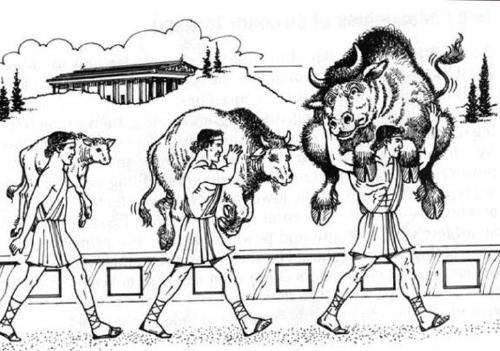
By the time the bull was fully grown, Milo was ripped. He probably also had a reputation, but check out those abs.
This principle is known as Progressive Overload, and it is the foundation of all types of physical training. Note that Milo didn’t strut into his local gymnasium and go straight for the full-size bull. He started small and built up methodically.
If you want to run, start by jogging for a few minutes. It doesn’t matter how short it is: do what you can manage, and then go a little further next time.
Just like savings slowly and then rapidly accrue interest over years, a slow and careful increase in effort does magical things when it comes to physical capacity.
Another way of stating the principle is that you just have to take the next step forward, from wherever you are. Your next step forward might be a brisk ten-minute walk. It might be signing up for a Tough Mudder. Only you know what the next step is for you.
Having long-term goals is great, but all that’s important now is the next step.
Everyone, whether a weekend walker or an Olympic athlete trains by the same law: Exert yourself, rest, and then take the next step forward.
You are made for it. If you are in possession of both a nervous system and a cardiovascular system, your body and mind will respond to movement just like anyone else.
Take the next step, and then another, and then another. My first run outside was about 10 minutes long. It felt tough. A 10K sounded daunting, and I had no idea how people ran half-marathons. But 18 months later, after a whole lot of “going a little further”, I ran 100km in a day. 5 half-marathons back-to-back.
Once you start walking a little more each day, those stairs don’t seem so tough. Once you see a little weight drop off, you grow in confidence. Once you make it through a spin class, you feel ready to tackle other challenges. Each step opens up new opportunities.
#3: “I’m too old!”
There’s a one-word answer to the “I’m too old” objection: Roger.
Fitness doesn’t discriminate by age and it may become even more important as we grow older. The NHS says:
Physical activity and exercise can help you stay healthy, energetic and independent as you get older.
Many adults aged 65 and over spend, on average, 10 hours or more each day sitting or lying down, making them the most sedentary age group.
They’re paying a high price for their inactivity, with higher rates of falls, obesity, heart disease and early death compared with the general population.
As you get older, it becomes even more important to remain active if you want to stay healthy and maintain your independence.
If you do not stay active, all the things you’ve always enjoyed doing and taken for granted may start to become that little bit harder.
So we need to move as we age. But we should give up on performance right?
There is a perception that performing well is purely a function of age, but this is not the case in a growing number of sports, particularly those where endurance is a big factor. This interests me, as my particular fitness perversions centre around running, cycling and (once I’m remotely good at it) swimming.
In Extreme Athleticism Is the New Midlife Crisis, Paul Flannery reveals some interesting statistics:
Today, almost a third of all triathlon participants in the United States are between the ages of 40 and 49, according to the U.S. Triathlon organization. That’s the largest age demographic by decade and one of the most competitive. The same holds true for the Boston Marathon, where more than 8,200 runners in their 40s crossed the finish line in April, a little more than 31 percent of the total field. The largest field of competitors at the 2017 New York Marathon was between the ages of 40 and 44. In London in 2015, those 40–49 runners had faster overall times than the 20–29-year-olds.
The trail runners, bless their hippie souls, don’t keep as detailed records, but as the number of races has more than doubled over the last decade, so have the ranks of graybeards. A research paper by Martin D. Hoffman and Kevin Fogard found that the average age of participants in 100-mile ultras was 44.
What drives these people? Flannery concluded:
…from my experience and the experience of many athletes I’ve spoken to, extreme fitness is less about being young again and more about building yourself up for the years ahead. In other words, getting better at getting older.
#4: “I don’t know where to start"
Good news, I’ve got it all planned out for you:
- Start small
- Walk and track
- Find movement that brings you joy
1. Start small
B J Fogg has studied human behaviour for 20 years at Stanford University. He works in a lab specialising in “behaviour design.” Not a bad place to work.
Fogg says that only three things will change behaviour in the long term:
- Having an epiphany
- Changing your environment
- Taking baby steps
Epiphanies are very effective but aren’t available on demand. Changing your environment can be tough. But baby steps are something you can get started on immediately.
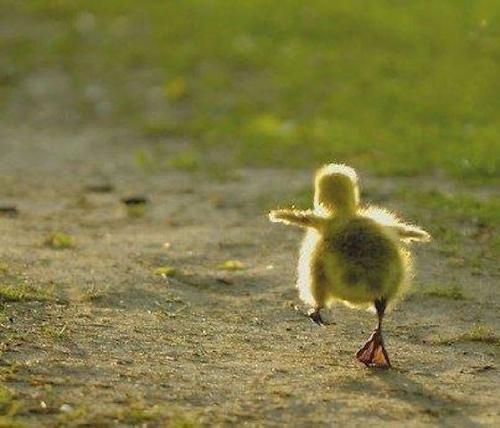
As we saw with Milo, over time baby steps build into huge changes.
There is a skill to all of this, and Mr Fogg has a free 5-day course on creating Tiny Habits. It will guide you through the process of introducing 3 new habits into your daily routine.
Here are some suggestions:
- Going for more lunchtime walks
- Doing a 10 minute home workout
- Making your own lunch more often
- Going for a bike ride
- Walking the dog for an extra 5 minutes each day
The NHS has lots of other ideas for getting more active, and I’ll shortly be throwing a pile of suggestions your way.
From the physical side of things, starting small is also important. If your body is not used to physical activity, it will need to adapt. Take it easy. Each workout stresses your body, and it’s essential to allow it time to recover, otherwise all the juicy adaptations will not take place.
2. Walk and track
Walking is the Original Movement™. No equipment required, highly portable, and also desperately necessary after hours of squinting at computer screens.

Walking is also easy to track, which means its simple to monitor and improve. Measuring steps is a great way of quantifying our overall movement, and any improvement in that direction is a big win.
- Once you can put a number to your movement, you have a baseline.
- Once you have a baseline, you have something to beat.
- When you push a little further, you can actually see the improvement in numbers, and you know what success looks like.
Pedometers are cheap, and your phone may already have a pedometer built in. Google your "<your phone> pedometer" for more help. Get measuring!
Before I got my first Fitbit, I thought I was nailing the recommended 10,000 steps a day. Turns out I was peaking at around 4,000. It was a bit of a shock, but it inspired me to up my game.
I decided to try and push my averages up to 7,000 a day. It meant I found myself taking more breaks, feeling more refreshed, listening to more podcasts on my lunch walks, and getting more time away from my screen. It was a win-win, and a lot of fun to see the numbers slowly increase in my favour.
Getting a gadget that measured all of this for me was one of the biggest helps early on. Suddenly the km’s I was running, the steps I was taking, as well as my sleep stats and minutes of vigorous activity were all there before me. Once I could see them, I could improve them.
If you’re in the market, a Fitbit is a great investment.

But there are also many cheaper look-alikes that will likely do the job too.
What gets measured gets managed. Get walking and start tracking.
3. Find movement that brings you joy
Medical disclaimer: Talk to your doctor before starting a new workout routine.
All the extra walking will also warm you up for the main event: activities, sports or really any movement that periodically elevates your heart rate.
It needs to be something you enjoy, something that brings you joy. Otherwise, you won’t care enough, and you’ll get bored.
To discover what you enjoy, you need to get out and try things. The good news is that there are literally thousands of options to chose from.
Here are some questions to get you thinking:
- What activities have enjoyed in the past?
- What were you always doing as a kid?
- When you watch the Olympics, do any particular sports stand out?
- Do you love being outside?
- Do you prefer being alone, or are you more inspired around other people?
The answers to these questions can help point you in the right direction.
Now, open up your favourite Maps app and type ‘gyms near me’. Open up the websites for the nearest gyms and write down the classes available. Pick one to try. They are usually pretty cheap if not free on the first visit and rarely require membership.
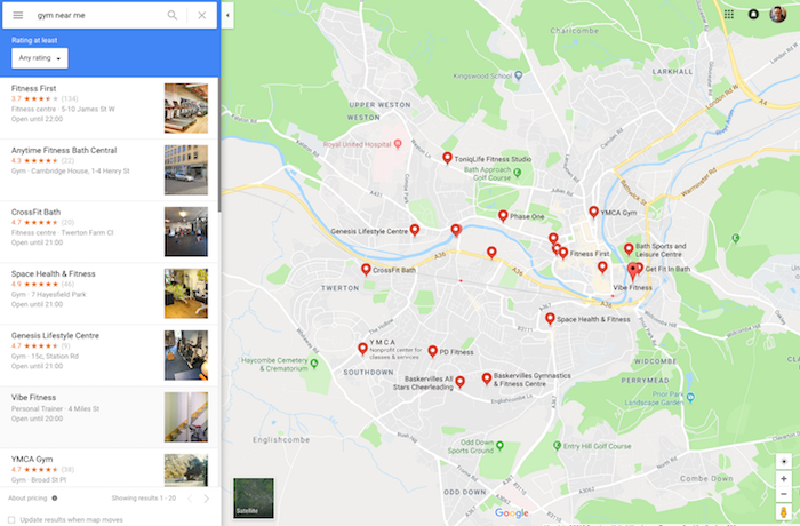
You don’t necessarily need to go to a gym if you prefer to get out and do something on your own. Bear in mind though that when you start something new, it’s not just your lungs and muscles adapting: your brain will be busy learning new patterns of movement too, and a good instructor can help you set down good habits from the get-go and avoid injury. The group support can also help you push yourself further, get in some social and add some further accountability.
Second-hand bikes are cheap to come by these days, and there are heaps of friendly, free grassroots cycling clubs sprinkled through villages and towns that organise weekend group rides. You’ll burn a ton of calories whilst getting to see new places and eating lots of cake. All before lunchtime. What’s not to like?
If you dislike other people and are short on time, how about a 7-minute workout? It’s a video, based on some science. Click it, do the movements as they appear on the screen. Go take a shower. You’re done.
There are a thousand other online video workouts available for free on YouTube, ranging from butt workouts to bikini blitzes. Browse some of the most popular channels and see what appeals to you.
If being shouted at by someone from the Internet is not your thing, NHS Live Well has a 10-minute home cardio workout, illustrated with a few photos. Job done.
Did you climb a lot when you were a kid? Indoor climbing centres are now open in most cities. Climbing is a great full body workout whilst also keeping your brain busy.
Running polarises people more than marmite on toast, but it is very easy to get started and burns up a lot of calories. If you want to give it a shot, the Couch to 5k plan lays out each week in detail. The first step? A brisk 5-minute walk.
When you’re ready to go for 5k, Parkrun host a bazillion weekly runs across the UK:
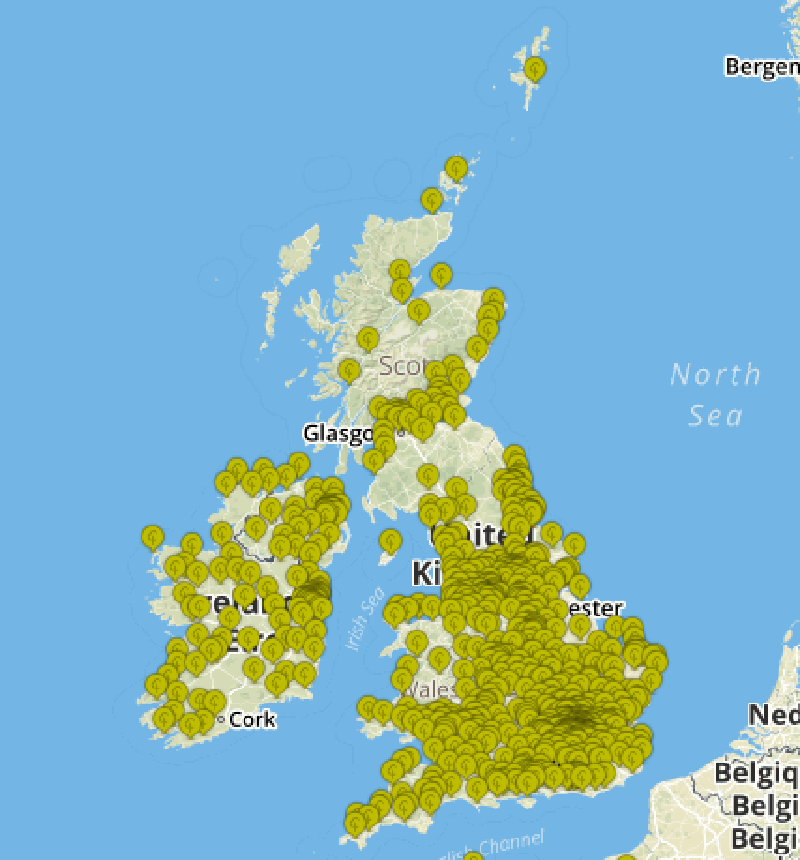
They’re free, usually run in nice parks, and they will track your timing for you too. You just need to register online before showing up.
Cracked 5k? A 10k is your next step. There are running events going on pretty much every weekend around you. Runners are a weird and wonderful bunch, full of enthusiasm and sadomasochistic zeal, and the running community is friendly and always welcoming.
Running events are the cherry on top where you get to see how your training translates into times, all whilst being cheered on by the public and the amazing marshalls that volunteer at so many races. If you want to get seriously inspired about running and read one of the best stories ever told, Born to Run is an incredible book.
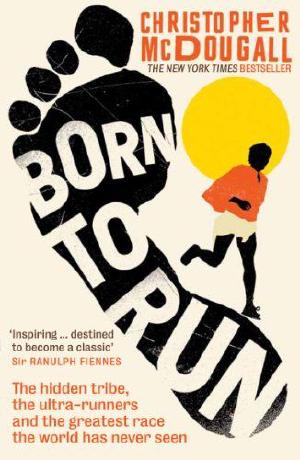
Would you rather be hit by a car than start running? How about something more GRRR and HNNGGGG? Weight training has a slew of health benefits, and it is not just for men. It’s worth getting someone to help you with the basic lifts, as the movements take some practice. You should also check out Alan Thrall’s instructional videos, because they are as informative as they are hilarious.
If you want to nerd out a little more, Starting Strength is the go-to guide for new lifters. If you’re already into lifting and comfortable squatting, benching and deadlifting, Martin Berkhan recently released The Leangains Method, a minimalist guide for those looking to lean down and get very strong, which I highly recommend.
CrossFit incorporates lifting, along with a lot of other fun movements. The gyms are stripped down (they’re called boxes), the workouts are intense, and the community is first class. Find out where your local box is. They have starter classes going on all the time, and people regularly get the CrossFit bug and transform themselves for the better.
CrossFit has a male, macho reputation, but it’s for young and old, and most boxes have dedicated women-only sessions too. (Which isn’t to say that women don’t regularly participate and embarrass men in the standard sessions too.)
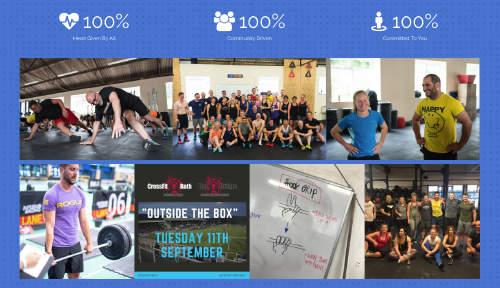
Want more ohmmm, less grunt? There are seven hundred flavours of yoga in your local area. Guaranteed. Physically, yoga is an excellent antidote to the chronic bodily tension that comes through sitting on your arse for most of the day. Psychologically, it’s also a potent stress buster. It’s multi-millennial lineage also means there’s a lot of philosophy and deeper practices available if that’s your thing.
Fancy a mix of gymnastics, body weight strength and animal flow? Ok, no-one has any idea what that really means, so here’s a sample:
GMB.io offers a selection of online courses in basic animal flow movements, and many other courses including advanced rings or paralletes work. I took their Elements course a few years back, and really enjoyed it.
Maybe you want a bit more of a release. Boxing classes are pretty commonplace, and there are now offshoots like boxercise that focus on building high-energy workouts around boxing.
Still not enough? There are too many martial arts classes to name. From the gentle flow of tai chi to the throwing and grappling of jujitsu, martial arts also tend to have a bigger emphasis on personal development and discipline which really suits some people, and makes it much more than just a workout.
Ever lifted a kettlebell? They’re a lot of fun and incredibly versatile. Try a kettlercise class and if—like me—you bond with the bell, buy one for your house. Learn how to swing, clean-press and Turkish get up, and you have a pretty fierce workout at hand.
Live somewhere where its always cold and gross outside? There are lots of indoor machines from the future to help you. If you’re feeling particularly flush with cash, Peloton offer a very impressive indoor cycling setup (with a built-in screen) that allows you to workout to live fitness classes with others from across the world, all from the comfort of your lounge:
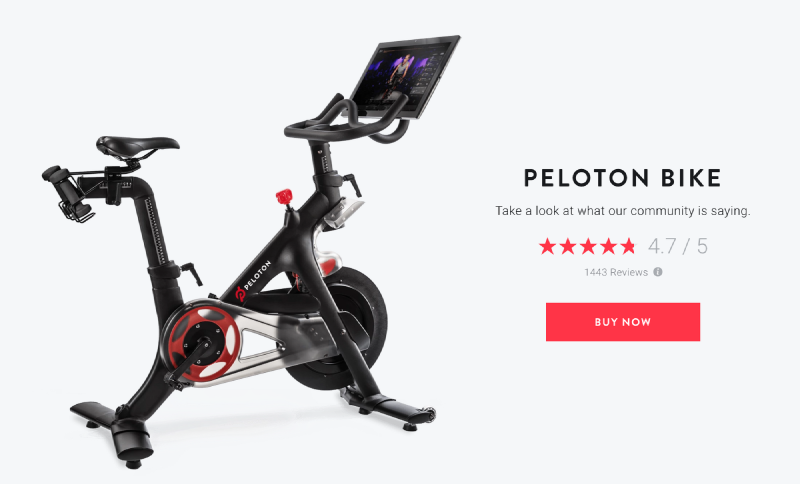
Ever skipped? A skipping rope or jump rope is a handy bit of kit to have for home workouts. A few minutes skipping on the spot is a real lung buster and bone builder. The Jump Rope Institute tells me that 10 minutes of nonstop jumping is equivalent to 30 minutes of jogging. Unbelievable right? A jump rope institute.
If you love walking and generally being outside, there are also lots of hiking groups about. If you want something with a little more of full-body focus, how about some Nordic walking?
Do you dream of swimming in open water: salt burning in your eyes and water clogging up your vital airways? Me neither, but open water swimming is another great way of combining aerobic exercise, strength and getting outdoors.
Do you want to climb, run and generally get very muddy with some friends? Obstacle course racing is still blowing up across the world, and there’s probably a Tough Mudder or Spartan race coming up near you. As a bonus, you will also get a sexy new profile picture for Facebook. Rise of Sufferfests is a fantastic documentary if you want to delve further into the OCR phenomenon.
Keep measuring: Strava
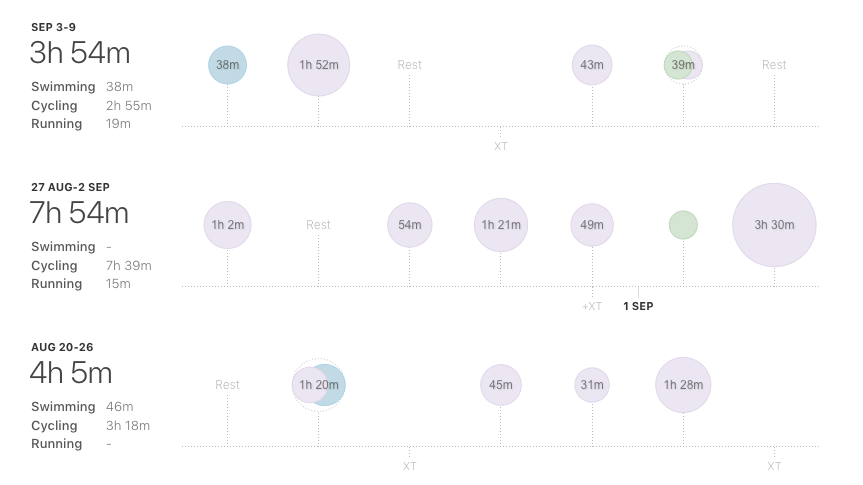
As with walking, if you’re working out, track it! I highly recommend joining Strava. It has a huge amount of features, particularly for runners and cyclists, and a really positive and supportive community. I spend much more time there than any other social network.
On Strava you can see what workouts your friends are doing, find new friends who are near you and steal excellent routes and rides from other people. Here’s my profile.
Strava also performs some high-level magic with your workout data. For example, each time I go for a ride, Strava breaks the ride down into “segments.” It records my times for each segment so I can see how fast I rode that segment, compared to every other time I’ve ridden it. It will tell me when I set a new record on a segment.
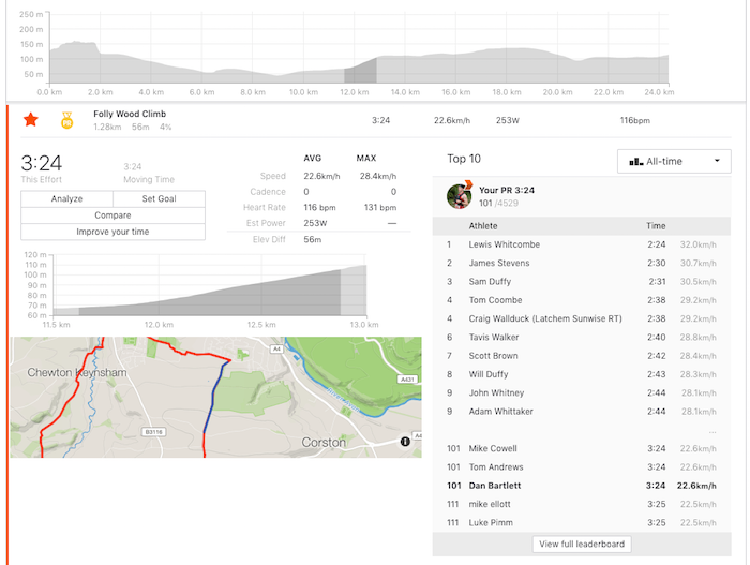
But I can also see everyone else who’s ridden that segment, and how their times compare to mine. I can also narrow it down to just seeing who has ridden this segment today. It’s incredible. Browsing these charts is also a great way to find other local cyclists/runners near you.
It doesn’t stop there: if you have a compatible fitness tracker, you can get segment warnings pop-up as you approach them in real time. I see a little popup on my watch when I approach some of my favourite segments. The screen changes and I can see how far ahead/behind my best time I am, and how much of the segment is left. It’s a lot of fun and a highly original way of sprinkling some sprints into a standard ride.
This is another way of quantifying progress and seeing what improvement looks like. It turns a standard cycle ride into an augmented reality arena with everyone else who’s been getting outside.
Bonus: “I don’t who to believe”
There is a lot of conflicting advice on fitness and nutrition. It’s a smokescreen that is often used to confuse, sell and otherwise distract you from the relatively simple things you need to do to get fit.
If you’re just starting out, keep it simple:
Find some way of periodically raising your heart rate. Do it with other people, and you’ll be getting a ton of other benefits. Whether it’s running, cycling, climbing, bowling, bouldering, football, rugby, dancing, sailing, spinning, skiing, skating, hiking, tennis, wrestling, grappling, boxing, polo, netball, or squash… Find movement that brings you joy.
Do it consistently. That’s all that’s important at first.
When you’re ready to go deeper, here are some of my favourite resources:
- Precision Nutrition Infographics
- NHS Live Well
- Examine.com
- If you’re on Instagram, you could start following Spencer Nadolsky, Shred By Science and Myoleanfitness
If you’ve enjoyed this post, please share it with someone else who you think would enjoy it.
9 Sep 2018
